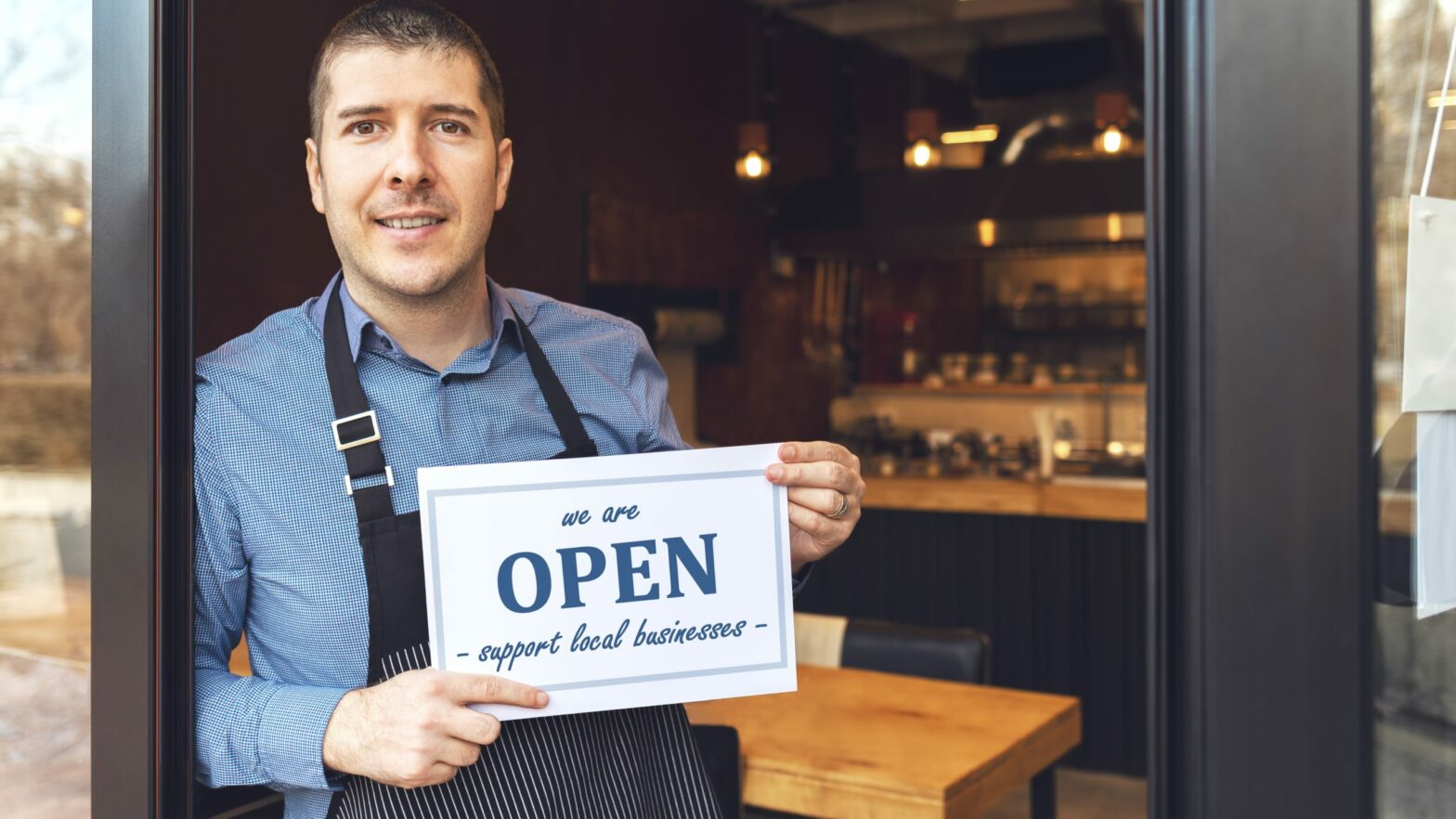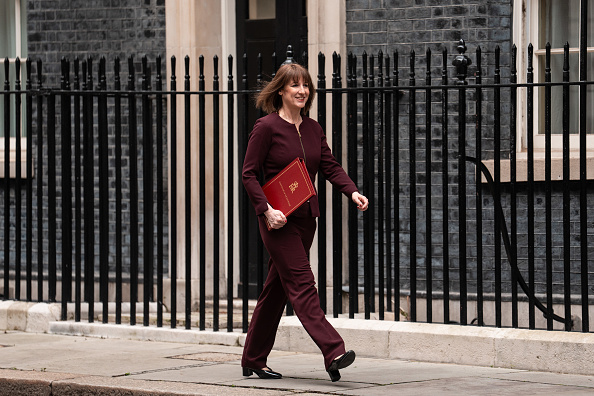UPDATED: Boris Johnson has announced the gradual unlocking of small businesses across England, as the UK emerges from the Covid-19 pandemic.
- Shops reopened on June 15
- Pubs, hotels and restaurants will reopen on July 4
New guidance published on June 24 details how hairdressers, hotels, pubs and other small businesses in England can reopen safely from July 4.
However, other businesses including nightclubs, casinos, indoor play areas, nail bars and beauty salons and gyms will remain shut for the time being.
Announcing the changes on Tuesday, Mr Johnson said the following venues will be able to reopen from 4 July:
- Pubs, bars and restaurants but only with a table service indoors, and owners will be asked to keep contact details of customers to help with contact tracing
- Hotels, holiday apartments, campsites and caravan parks but shared facilities must be cleaned properly
- Theatres and music halls but they will not be allowed to hold live performances
- Hair salons and barbers will be able to reopen but must have protective measures, such as visors, in place
- Cinemas, museums and galleries
- Funfairs, theme parks, adventure parks, amusement arcades, outdoor skating rinks and model villages
- Attractions with animals, such as at zoos, aquariums, farms, safari parks and wildlife centres
The general advice for all businesses is to carry out a Covid-19 risk assessment to ensure the safety of their workplace, which should be shared on your website, and also develop cleaning and hygiene procedures.
Covid-19 Secure – what does it mean?
The government has published documents covering 12 business sectors setting out what small business owners can do to ensure their businesses protect employees and customers against COVID-19.
They call this being “COVID-19 secure” and small businesses can display badging that they have followed guidance. Partly it is a reassurance exercise for employees and customers.
The 12 business sectors covered are:
Close-contact services
Construction and other outdoor work
Factories, plants and warehouses
Heritage locations
Hotels and other guest accommodation
Labs and research facilities
Offices and contact centres
Other people’s homes
Restaurants, pubs, bars and other takeway services
Shops and branches
Vehicles
The visitor economy
5 steps to working safely
#1 – Carry out a COVID-19 risk assessment
Before restarting work you should ensure the safety of your workplace by:
- carrying out a risk assessment in line with the HSE guidance
- consulting with your workers or trade unions
- sharing the results of the risk assessment with your workforce and on your website
#2 -Develop cleaning, handwashing and hygiene procedures
You should increase the frequency of handwashing and surface cleaning by:
- encouraging people to follow the guidance on hand washing and hygiene
- providing hand sanitiser around the workplace, in addition to washrooms
- frequently cleaning and disinfecting objects and surfaces that are touched regularly
- enhancing cleaning for busy areas
- setting clear use and cleaning guidance for toilets
- providing hand drying facilities – either paper towels or electrical dryers
#3 – Help people to work from home
You should take all reasonable steps to help people work from home by:
- discussing home working arrangements
- ensuring they have the right equipment, for example remote access to work systems
- including them in all necessary communications
- looking after their physical and mental wellbeing
#4 – Maintain 2m social distancing, where possible
Where possible, you should maintain 2m between people by:
- putting up signs to remind workers and visitors of social distancing guidance
- avoiding sharing workstations
- using floor tape or paint to mark areas to help people keep to a 2m distance
- arranging one-way traffic through the workplace if possible
- switching to seeing visitors by appointment only if possible
#5 – Where people cannot be 2m apart, manage transmission risk
Where it’s not possible for people to be 2m apart, you should do everything practical to manage the transmission risk by:
- considering whether an activity needs to continue for the business to operate
- keeping the activity time involved as short as possible
- using screens or barriers to separate people from each other
- using back-to-back or side-to-side working whenever possible
- staggering arrival and departure times
- reducing the number of people each person has contact with by using ‘fixed teams or partnering’
See also: How to do a coronavirus risk assessment on your small business premises
How to make your pub, restaurant or hotel Covid-19 secure
Pubs
- Limits to the number of people allowed into pubs with markings on the floor to ensure social distancing
- Customers encouraged to order drinks on smart phone apps, as opposed to queuing at the bar
- Drinks delivered to spaced-apart tables
- Empty glasses will be collected from tables
- Pub staff will clean bar tops, door handles and fruit machines hourly
- Staff will patrol beer gardens to ensure social distancing is being observed
- Toilets: Consider the use of social distancing marking in areas where queues normally form, and the adoption of a limited entry approach, with one in, one out (whilst avoiding the creation of additional bottlenecks)
- Setting clear use and cleaning guidance for toilets, with increased frequency of cleaning in line with usage. Use normal cleaning products, paying attention to frequently hand touched surfaces, and consider use of disposable cloths or paper roll to clean all hard surfaces
- Cleaning procedures for goods and merchandise entering the site
- Considering where congestion caused by people flow and pinch points can be improved. Using one-way systems, staggered shifts and assigned staff mealtimes are possible ways to minimise the risk of transmission
Restaurants
- Strict limits on number of customers allowed in at any one time to ensure social distancing
- Reservations encouraged to stagger bookings
- Napkins and cutlery will only be brought out with food
- Single-use paper menus will replace laminated menus
- Condiments served in single sachets on request
- Reduced menus likely as chefs try to minimise cross-contamination of ingredients
- Contactless card payment encouraged
- Toilets: Consider the use of social distancing marking in areas where queues normally form, and the adoption of a limited entry approach, with one in, one out (whilst avoiding the creation of additional bottlenecks).
- Setting clear use and cleaning guidance for toilets, with increased frequency of cleaning in line with usage. Use normal cleaning products, paying attention to frequently hand touched surfaces, and consider use of disposable cloths or paper roll to clean all hard surfaces.
- Cleaning procedures for goods and merchandise entering the site.
- Considering where congestion caused by people flow and pinch points can be improved. Using one-way systems, staggered shifts and assigned staff mealtimes are possible ways to minimise the risk of transmission.
Hotels
- Doormen will remind new arrivals that social distancing must be observed
- Receptionists to keep their distance
- Porters will be allowed to carry suitcases up to guests’ rooms but will have to leave them outside
- Guests encouraged to take stairs as opposed to using the lift
- Hotel guests encouraged to use room service rather than hotel restaurant
- Where offering room service, taking measures such as dropping butler’s trays outside door, and encouraging tips to be added to the bill
- Guests must self-isolate in their hotel room if they fall ill and food will be delivered on paper plates
- Encouraging guests to wear masks on communal corridors
- Considering minimising lift usage from reception, and providing clear signage for new lift rules
- Ensuring that any bar or dining area is only opened in a way compliant with UK government guidance on the hospitality sector
- Work with neighbouring businesses and local authorities to consider how to spread the number of people arriving throughout the day, for example by staggering opening hours; this will help reduce demand on public transport at key times and avoid overcrowding
- Take measures to avoid crowded reception areas, such as staggering check-in and check-out times or placing markers on the floor to maintain social distancing
- Make staff accessible to guests via phone, emails and guest apps
Extra guidance on hostels, B&Bs, self-catering accommodation, caravan sites and campsites are available on the government website.
Gyms and spas
Gyms and spas will remain closed from July 4 but the Government has issued some guidelines for businesses to prepare, including:
- Gym staff will use clickers to count people into gyms and swimming pools with booking systems used to prevent overcrowding
- Treadmills and weight machines will be spaced apart and gym managers will enforce social distancing
How to make your hair salon and other close-contact services Covid-19 secure
Close contact services include:
- hairdressing
- barbershops
- beauty and nail bars
- makeup
- tattoo and spray tanning studios
- spas
- sports and massage therapy
- wellbeing and holistic locations
- dress fitters
- tailors
- fashion designers
Practical steps you can take to make close-contact work Covid-19 secure
- Anyone working in close proximity for an extended period of time must wear a visor
- Encourage clients to use hand sanitiser or wash their hands as they enter the premises or before treatment
- Calculate the maximum number of clients that can reasonably follow social distancing guidelines (2 metres or 1 metres with risk mitigation), and limiting number of appointments at any one time
- Asking clients to attend on their own when booking an appointment
- Operating an appointment-only system
- Maintain social distancing in waiting areas when clients wait for appointments. Or operating a one-in, one-out system for small premises
- Keeping toilets inside premises open
- Putting down floor markings to remind staff and clients to keep their distance and putting up social distancing signage
How to make your shop Covid-19 secure
Shops include all retail stores. These include:
- food retailers
- chemists
- hardware/homeware stores
- fashion shops
- charity shops
- betting shops and arcades
- tailors, dress fitters and fashion designers
- car dealerships
- auction houses
- antique stores
- retail art galleries
- photography studios
- gift shops and retail spaces in theatres, museums, libraries, heritage sites and tourism sites
- mobile phone stores
- indoor and outdoor markets
- craft fairs
- similar types of retail.
General advice
All retail businesses and stores must first assess how many customers can fit into their premises while observing the 2m social distancing rules.
Other general measure to ensure a Covid-19 secure shop or café include:
- Limit the number of customers on the shop floor, paying special attention to areas that are likely to get congested
- Suspend or reduce customer services that contravene social distancing guidelines. Consider having fixed working pairs that can help assist with heavy objects rather involving the customer in the process
- Have a flexible attitude to queue management, one-way flow and social distancing procedures, adapt if certain areas are growing congested
- Encourage customers to shop alone where possible, unless they need specific assistance
- Remind customers who are accompanied by children that they are responsible for supervising them at all times
- Changes to entry and exit points must take account of those who might need special assistance, including disabled shoppers
- Use outside premises for queuing where available and safe
- Regularly clean work surfaces and spaces, with particular focus on busy areas
- Barriers between customer and cashier
- Communicate guidelines to all customers through signage or vocal reminders
- Disinfect baskets and trolleys
- As far as possible, where workers are split into teams or shift groups, fixing these teams or shift groups so that where contact is unavoidable, this happens between the same people
- If you are cleaning after a known or suspected case of Covid-19 then you refer to the specific guidance
How to make your clothes shop COVID-19 secure
- Fitting rooms should be closed wherever possible given the challenges in operating them safely
- Where fitting rooms are essential, for example to support key workers buying critical protective clothing, they should be cleaned very frequently, typically between each use
- Creating procedures to manage clothes that have been tried on, for example delaying their return to the shop floor by 72 hours
- Storing items that have been returned, donated, brought in for repair or extensively handled, for example tried-on shoes or clothes, in a container or separate room for 72 hours, or cleaning such items with usual cleaning products, before displaying them on the shop floor. Materials used for cleaning can be disposed of normally
- Customer handling of merchandise should be kept to a minimum, consider different display methods, new signage or rotation of high-touch stock
- Put in place picking-up and dropping-off collection and returns points where possible
How to make your café or retail shop COVID-19 secure
- Frequently clean work areas and equipment between uses, using your usual cleaning products. Frequent cleaning objects and surfaces that are touched regularly such as self-checkouts, trolleys, coffee machines, or staff handheld devices, and making sure there are adequate disposal arrangements
- Clear workspaces and removing waste and belongings from the work area at the end of a shift
- On premises café seating areas must be closed and all hot and cold food purchased must be consumed off premises
>See also: What is the average cost of fitting out my shop for coronavirus?
How to make your takeaway or restaurant COVID-19 secure
The government’s advice is relatively standard in terms of workplace controls. There are some crucial things to note:
- Only delivery and takeaway services are permitted. That means any indoor or outdoor seating must be closed and businesses are encouraged to keep customers outside of their physical premises if or where possible
- Rigorous cleaning techniques should be instituted. This includes the use of single use condiment packets or condiment containers cleaned after every usage and providing hand sanitiser
- Contact with kitchen staff should also be kept to a minimum and that extends to amount of people allowed access to the kitchen as well
- Drivers and kitchen staff should ensure they have washed their hands before the transference of food can take place and this should be done at a distance with as minimal amount of contact as possible
- Physical barriers are a good way to enforce social distancing and designated pass–over stations should be established for delivery drivers and other staff
- Guidance and awareness are key to the government’s Covid-19 secure strategy, signage, guidelines, announcements and warnings are crucial. Staff must be made aware of safe handwashing techniques, social distance spacing, and cleaning standards. Customers must also be communicated to clearly about where to wait for takeaways, how service will be conducted and payment procedures
- Customers should be urged to use card, contactless or online payments through an app or website to order food, reducing contact and transmission of material between customer and worker
- Keep each person to a separate workstation, especially during food preparation
- Stagger work breaks, minimalise contact between staff and other people on breaks
The government says there is no evidence of Covid-19 spreading on food packaging but says that you still have to be cautious.
How to make your office COVID-19 secure
- A good place to start is reviewing layouts and processes to allow people to work further apart from each other
- Consider using floor tape to mark areas to help workers keep to a 2m distance
- Where it is not possible to move workstations further apart, using screens to separate people from each other
- Manage occupancy levels to enable social distancing
- Avoid use of hot desks, however, for instance in call centres or training facilities where this might not be possible, clean workstations between different occupants including shared equipment
- Frequently clean objects and surfaces that are touched regularly, such as door handles and keyboards, and making sure there are adequate disposal arrangements
The government has laid out some key areas for offices to focus their efforts on. These include:
For meetings
- Use remote working tools to avoid in-person meetings, if possible
- Only absolutely necessary participants should attend meetings and should maintain 2m separation throughout
- Avoid sharing pens and other objects
- Providing hand sanitiser in meeting rooms
- Holding meetings outdoors or in well-ventilated rooms whenever possible
- For areas where regular meetings take place, use floor signage to help people maintain social distancing
Lunch and work breaks
- Stagger break times to reduce pressure on break rooms or canteens
- Use safe outside areas for breaks
- Create additional space by using other parts of the workplace or building that have been freed up by remote working
- Install screens to protect staff in receptions or similar areas
- Provide packaged meals or something similar o avoid fully opening staff canteens
- Encourage workers to bring their own food
- Reconfigure seating and tables to maintain spacing and reduce face-to-face interactions
- Encourage staff to remain on-site and, when not possible, maintaining social distancing while off-site
Delivers and office supplies
- Restrict non-business deliveries, for example, personal deliveries to workers
- Identify areas where people directly pass things to each other, for example office supplies, and finding ways to remove direct contact, such as using drop-off points or transfer zones
Office visitors and communication
- Determine if schedules for essential services and contractor visits can be revised to reduce interaction and overlap between people, for example, carrying out services at night
- Maintain a record of all visitors, if this is practical
- Provide clear guidance on social distancing and hygiene to people on arrival with signage or visual aids and before arrival, by phone, on your website or by email
- Establish host responsibilities relating to Covid-19 and providing any necessary training for people who act as hosts for visitors.
- Review entry and exit routes for visitors and contractors to minimise contact with other people
- Provide clear, consistent and regular communication to improve understanding of Covid-19 security measures
How to handle deliveries and orders
- Companies are advised to overhaul their current pick-up and drop-off collection points, introduce spaces where keeping social distancing measures is possible and make sure they are followed with signage and markings
- Electronically processing deliveries with a pre-booking system can also help reduce contact at security points
- The government also says that, when safe to do so, single employees should unload or load vehicles
- By altering frequency of deliveries, such as ordering a larger quantity of goods less often, can help reduce contact with workers outside of your business
Ventilation
The business department has underlined the importance of properly ventilated spaces in each of its eight reports.
- Check whether you need to service or adjust ventilation systems
- Most air conditioning system do not need adjustment, however where systems serve multiple buildings or you are unsure, advice can be sought from your heating ventilation and air conditioning (HVAC) engineers or advisers
- Opening windows and doors frequently can also help improve ventilation of buildings and offices





